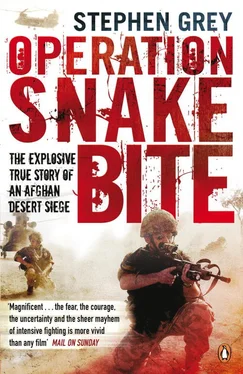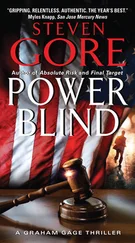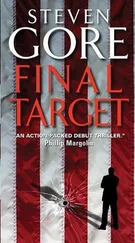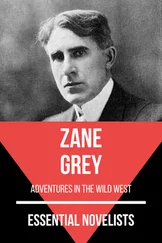‘My complaint was that I wasn’t told about it,’ recalled Milford. ‘You know, we had no details on it. So, we ended up, you know, trying to photograph people, trying to treat them at the same time, trying to figure out what had gone on but not knowing what had happened.
‘We treated the people and then released them. And then, all of a sudden, they were saying to us, “Right, what about Omar whatever his name was? Was he in the truck when it came?” Well, I had absolutely no idea. They hadn’t left a liaison officer or anything with us. They just hit the target.
Milford declined to identify the unit involved. But American sources in Kabul revealed its identity: a unit known only by a code-number, Task Force 373. [17] Task Force 373 identified publicly in a US Air Force photo release, along with a photograph of its commander, Brigadier General Raymond Palumbo, at: www.militaryphotos.net/forums/showthread.php?t=139629&page=3 . TF 373 was identified as a ‘take-down’ unit by William Arkin, ‘Elite Terrorist Hunters in Iraq’, The Washington Post online, 28 March 2007.
This was not only US special forces, but elite ‘tier 1’ special forces, the US Navy Seals supported by Army Rangers. The job of 373 was to hunt and ‘take down’ human beings: the top commanders of the Taliban and Al Qaeda.
The mission that night was code-named Operation Black Carib, the sources said, and it had been successful: it had fatally wounded a Taliban commander, Sher Agha, who had mounted a series of attacks on the British in Garmsir since the beginning of November.
If there was one thing that marred British and American operations in Afghanistan more than anything else it was the persistent reports of the death of ordinary Afghans. Speaking generally about civilian deaths, Mackay would say: ‘You can’t talk about winning over the population and then be dismissive if you end up accidentally killing part of that population.’
The trouble for regular soldiers was that – again and again – the military units behind these controversial attacks were special force units whose operations were cloaked in secrecy. While Afghans demanded explanations and justice, regular soldiers and their spokesmen were forced to say, ‘No comment.’
The use of elite special forces, with the skills to fight in small numbers and survive behind the enemy’s lines, had long been seen by America and Britain as at the heart of a strategy to win against a guerrilla army. Just as in Northern Ireland, British army operations had always had their dual components: while regular soldiers did ‘framework operations’ to take and dominate ground and work with the population, more secretive units made use of intelligence to take the fight to the enemy.
‘Don’t be deceived by all the hearts and minds and all the open stuff,’ one US general told me. ‘As big a part of the war is what we call the manhunt: tracking down and getting the bad guys.
By the winter of 2007, the conventional forces in Task Force Helmand under Mackay’s command were augmented by what was becoming a baffling array of different special force teams. None of them came under Brigade’s direct command; some of them were not even under NATO command, but rather under America’s Operation Enduring Freedom anti-terrorist campaign. And, time and again, the operations they launched came without notice to those who would face the consequences of their actions – sometimes good and sometimes bad.
Britain’s most elite forces were the Special Air Service (SAS) and the Royal Marines’ equivalent, the less-well-known Special Boat Service (SBS). By 2007, the two key theatres of war were divided so the SAS concentrated on Iraq and the SBS led in Afghanistan. (Likewise, the SAS’s sister force, the American Delta Force, also concentrated on Iraq, and the Navy Seals took on Afghanistan.)
Along with the special forces from other European countries like France, Germany and Italy, the SBS had been placed under NATO command. Formed into a ‘mobile high-value target team’, its activities in Helmand were controlled by the regional headquarters in Kandahar, and ultimately by General McNeill. America’s Task Force 373, however, was not under McNeill’s command but was working under orders from US Central Command.
British forces had their own special forces base in Helmand, somewhere in the desert, and the backing of the 1st Battalion, the Parachute Regiment, who had in 2006 been re-roled from conventional soldiers into the Special Forces Support Group, operating rather like US Rangers. British special force units were also embedded in training Afghan elite forces. A national counter-narcotics unit, Force 333, was led by British SBS mentors and was in theory under Afghan government command. So was a new reconnaissance force that was training to become a unit to be called the Helmand Scouts.
Also in Helmand was a United Arab Emirates special forces contingent and a reconnaissance force of US marines. The largest American force, however, and the most visible special force presence in the province, was the ubiquitous Green Berets. In Helmand they were operating non-covertly as Task Force 32. Their main global mission – as first defined by President Kennedy, who set them up – was to work alongside indigenous forces, here the Afghan army. But they also worked independently, under the orders not of NATO but of US Central Command.
The logic of using special forces to fight the Taliban was unassailable. The best-trained guerrilla armies melt away before superior forces and the advance of conventional units. They operate in small groups. They stay hidden. They wait for an ambush. They use lightweight kit and they stay mobile. The obvious way to find and to defeat them is to match their tactics. This is where the special forces could excel. At their best, special forces could not only be more devastating to the enemy, they could also be more precise in avoiding killing the innocent.
But working behind enemy lines was dangerous work. In the open, flat deserts of Helmand or the densely populated green zones, there was often little place to hide. The population acted as scouts for the enemy. And a small patrol of special force fighters could easily become overwhelmed. To survive, the patrol would have to call in air power. Then, suddenly, the light footprint became heavy and, with little time to flee from the fight, civilians might get killed by the bombs or crossfire.
The alternative was to strike fast and furiously: to land by helicopter at night, attack the target and then withdraw before the enemy gathered strength. But this too had its drawbacks. A raid was only as good as the intelligence that directed it. And, in a country where ordinary families possessed guns to defend themselves, there was always a high risk that anyone would end up shot. Surprised in his home at night by masked soldiers bursting in, an innocent man might reach for his gun and then be shot instantly by a coalition soldier – acting in self-defence.
Talking of the land round Garmsir, Milford said the people there were jumpy and would defend their homes. ‘These people were armed, and yes, they may well have been shooting. But were they protecting their property or were they Taliban?’
Soon after the incident in Toube, a deputation of tribal elders came up to Lashkar Gah to protest at the American raid. They demanded compensation and justice.
In one meeting attended by almost 100 people, the Helmand police chief, Muhammad Andiwal, blamed the Taliban for fighting from the compounds of ordinary families. ‘I can feel your pain,’ he told the elders. ‘Even a heart of stone would melt with these sorrows. I will speak with the foreigners and make them promise not to kill civilians again like this.’
Andiwal told me later: ‘They complained there were nineteen or twenty killed, and I’m not sure of the numbers.’ But he added, ‘It is true. There were casualties.’
Читать дальше












